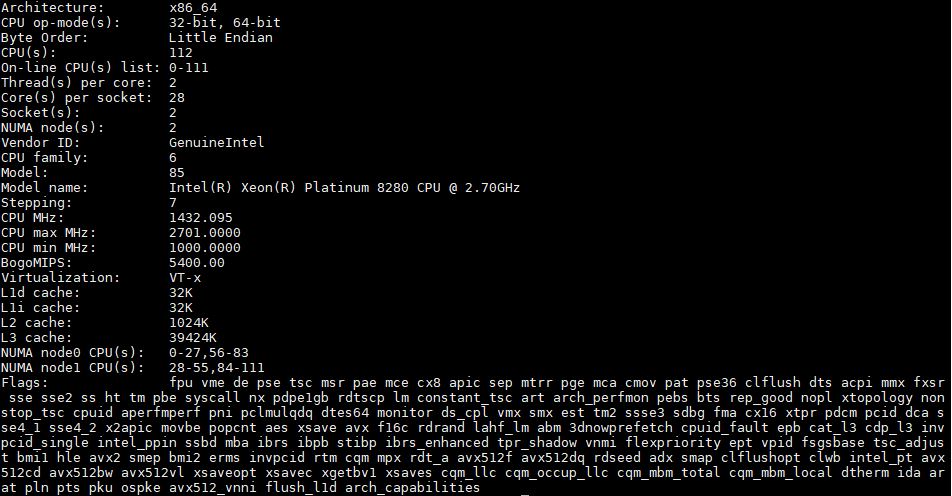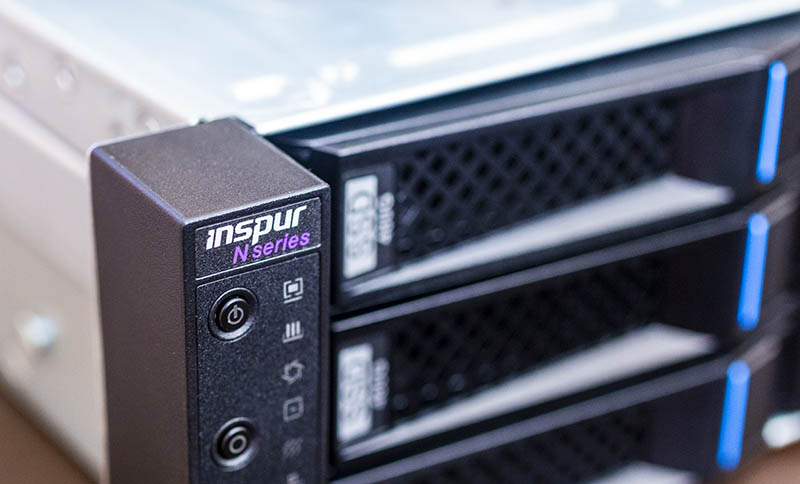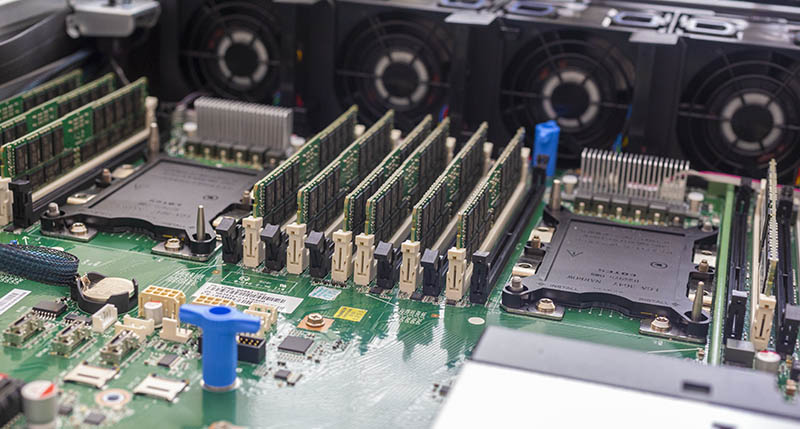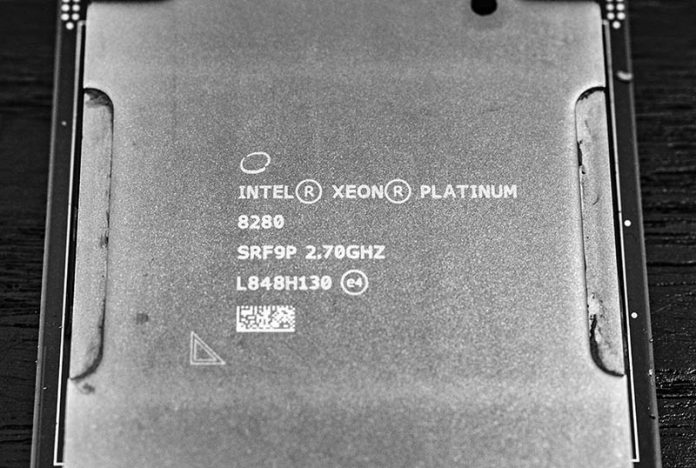Our review of the top-end Intel Xeon Scalable processor, the Intel Xeon Platinum 8280 has been a long time coming. We had initial benchmarks in our 2nd Gen Intel Xeon Scalable Launch Details and Analysis piece, but we first focused on the higher-volume segments. These are halo products for the Intel LGA3674 socket and have security mitigations for side-channel variants built-in. The Intel Xeon Platinum 8280 is a 28 core, 56 thread CPU that has almost everything Intel can offer in this generation.
That “almost” is because there are two SKUs that sit above the standard Intel Xeon Platinum 8280, the Xeon Platinum 8280M and Xeon Platinum 8280L. The three chips are essentially the same, except that if you are buying a high core count/ frequency chip to run memory-intensive tasks, the standard Platinum 8280 will only handle 1TB of RAM. One needs to upgrade to the Platinum 8280M for 2TB of memory support and the Platinum 8280L for up to 4.5TB of memory.
Key stats for the Intel Xeon Platinum 8280: 28 cores / 56 threads and 2.7GHz base clock and 4.0GHz turbo boost with 38.5MB cache. The CPU features a 205W TDP. These are $10,009 list price parts. Here is the ARK page with the feature set.
Here is what the lscpu output looks like for the chips:

Let us be clear up-front, virtually nobody is paying $10,009 for an Intel Xeon Platinum 8280. These are high list price chips meant for heavy discounting that happens on high-end systems. Even Intel’s main competition, AMD, acquiesced that that is not the street price for the Platinum 8280 as you can see in our Notes from Talking Servers with Forrest Norrod SVP and GM at AMD piece. The higher-cost M and L variants are likewise meant for discounting and also meant to recapture some value so Intel Optane DCPMM modules can remain lower-cost.
Dual Intel Xeon Platinum 8280 Test Configuration
For our 2nd Generation Intel Xeon Scalable CPU dual-socket reviews, we are using the following configuration:
- System: Inspur Systems NF5280M5
- CPU: Intel Xeon Platinum 8280
- RAM: 12x 32GB DDR4-2933 ECC RDIMMs
- Storage: 2x Intel DC S3520 480GB OS
- PCIe Networking: Mellanox ConnectX-4 Lx 25GbE, Intel X710 4x 10GbE SFP+
A quick note here, we did not utilize the Intel Optane DCPMM here because we had standard chips. Using Intel Optane DCPMM even with two 128GB modules per CPU to stay well below the 1TB per CPU memory limit would have meant our memory would work at only DDR4-2666 speeds.

The Inspur Systems NF5280M5 is a dual-socket Intel Xeon Scalable solution that has a variety of I/O configurations. We kept our test unit relatively light on rear riser cards to ensure we had significant airflow for the Intel Xeon Scalable line we would test up to 205W TDP.

We are going to add a link to our full Inspur Systems NF5280M5 review once that is online in the next few weeks.
Next, we are going to take a look at our Intel Xeon Platinum 8280 benchmarks, we are then going to focus on power consumption then conclude with our final words on the processors.





Who gets these deep discounts on Intel CPUs? For example, Dell must buy the 8280 in bulk, but they sell it at retail for over $10k (at least for the 7920 workstation).
I’d like to know more about the avx differences between amd and intel.
I see that amd doubled to 256 bit. Do they have one or two execution units per core?
Also, since Cooper Lake has been sampling a while, should we also ask about AMD support for bfloat16? This will double the FP ai training FMAs per cycle for Cooper Lake vs Cascade Lake.
The ai training compute requirements are large, and doubling every 3.5 months according to some articles. Is that still true?